New York Apples Take Center Stage
September 8, 2025 | 10 min to read
The Empire State's apple season is set for a robust harvest, buoyed by favorable weather and active retailer support. Mathew Blair of Northeast Shared Services emphasizes engaging consumers with local promotions and diverse varieties like SnapDragon and Ruby Frost. With over 250 apple types, the New York Apple Association highlights “The Big Flavor,” while innovative marketing techniques, including storytelling and digital campaigns, aim to connect with consumers, particularly Millennials and Gen Z.
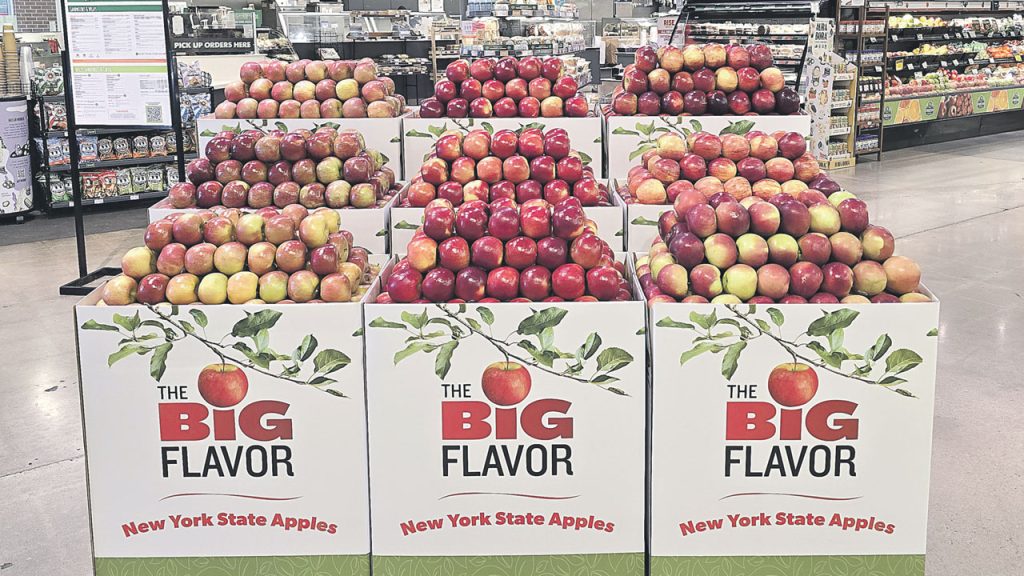
The Empire State apple season promises a strong harvest and sales excitement.
With favorable weather conditions and support from retailers, growers and the New York Apple Association, the Empire State fall apple harvest should be sweet for fans of the fruit.
“New York apple season is a marquee time in the produce calendar, especially for a Northeast-based retailer,” says Mathew Blair, produce category business manager, of Northeast Shared Services, Schenectady, NY, which serves Price Chopper/Market 32 Supermarkets and Topps Markets as part of Northeast Grocery Inc. operations.
Northeast Shared Services promotes apples with circulars, social media engagement and in-store signage, while taking a variety of approaches to get consumers excited about New York apple season.
“We lean into local season and local signage,” says Blair. “Customers connect with the idea of supporting New York farmers. We are always sure to call out locally grown products and do grower spotlights when possible.”
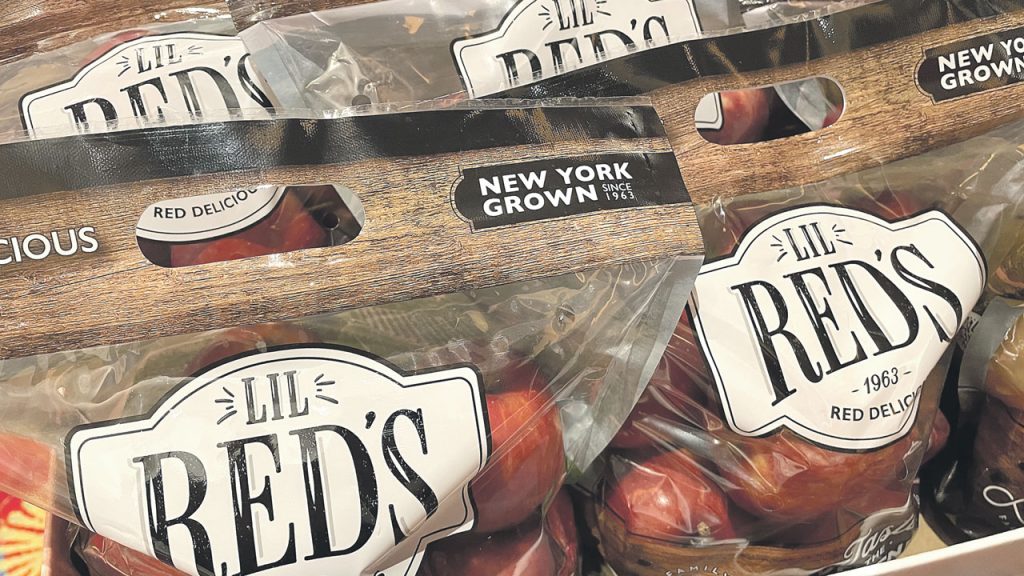
“We make more space for regional favorites, like the SnapDragon, Ruby Frost, etc.,” he adds. “Core varieties are still important, like the Gala and Macs, but the newer varietals are gaining popularity with the younger generation shoppers.”
Education also is an important part of promoting New York apples, Blair notes. “We also use POS (point-of-sale) materials to help communicate the message to the shoppers on flavor profiles and best uses, for example, best for baking versus fresh eating.”
ADD A LITTLE FLAIR
Northeast Shared Services also develops destination displays beyond their typical in-store presentations.
“We don’t just stock apples in their home categories during local season,” he says. “We have expanded secondary displays throughout the department, featuring tote bag apples and 5-pound bags that aren’t fully available outside of the fall selling months. All displays are usually built with a fall-themed decoration to help grab the customer’s attention and drive that extra sense of excitement.”
Displays always include complementary products. Popular items include caramel dips/wraps, apple cider, pie crusts and cinnamon sticks, among other items that help boost basket size and get the customers thinking beyond just buying a piece of fruit.
In addition, Northeast Shared Services runs what Blair calls, “a very aggressive ad campaign featuring New York apples while in season. You will see them advertised at least twice a month on our cover page at an aggressive retail that is often best in market.”
In its approach to New York apple season, Bargain Grocery, Utica, NY, sees an abundant opportunity through the fall to keep the presentation fresh. Mike Servello, chief executive, says from the start of the season in early fall, apples are something that the operation can move in volume.
“We usually deal with western New York,” he says. “As they start, you get the early varieties. We buy things in bins and put them out at a reasonable price. As they come on, we put out the other varieties. We try to have everything unless it’s exotic and expensive.”
Bargain Grocery’s approach is to broaden the varieties it offers through midseason, then scale back to popular favorites as New York apple season begins to wind down.
PLENTY OF VARIETY
As summer rolled through New York, indications were the apple season would be a good one.
The season kicks off with early season varieties, including Paula Red, Ginger Gold, Jonamac, Zestar! and Premier Honeycrisp, followed by SweeTango, Honeycrisp, McIntosh, Gala, SnapDragon Macoun, Empire, EverCrisp, Fuji, Red Delicious and RubyFrost and many others in September and October, says Cynthia Haskins, president and chief executive, New York Apple Association (NYAA), Fishers, NY.
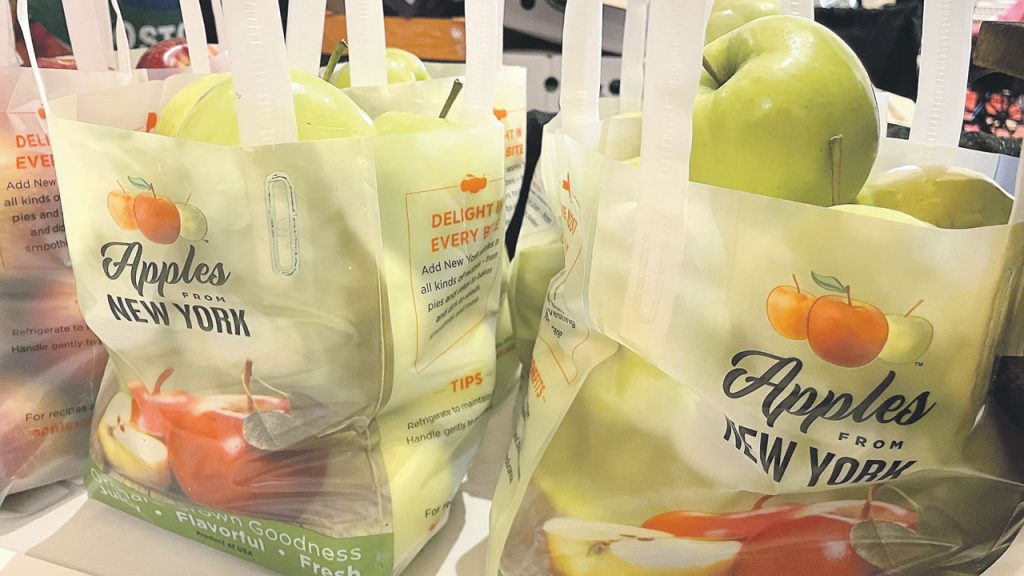
“New York is known for ’The Big Flavor,’ a signature taste that sets our apples apart and reflects the quality and care of our state’s apple growers,” she says.
Harvest wraps up as late as the first part of November, depending on the weather. New York grows more than 250 apple varieties, Haskins notes, with more than 36 available in promotable volumes. Many are sold through retail chains and direct-to-consumer markets, such as farm stands, u-pick orchards and farmers markets. In all, New York has more than 500 apple growers, many of them multigenerational.
Kaari Stannard, president and owner of Yes! Apples, Glenmont, NY, says New York’s apple industry is undergoing a transformation. “From unpredictable weather to rising labor costs, growers are facing real challenges, but they’re also rising to the occasion,” Stannard says. “Through innovative breeding, smart technology and a fresh focus on variety, flavor and sustainability, New York’s apple growers are finding new ways to grow stronger, smarter, and more resilient than ever before.”
Yes! Apples, a consumer-focused brand managed by New York Apple Sales, actively champions New York apples through direct-to-consumer marketing, retail merchandising and strategic partnerships, she explains. “We support retailers through promotions and shopper marketing, and we’re working hard to connect with consumers in meaningful ways to highlight the incredible apples grown by our New York-based family orchards.”
In recent years, New York growers have faced increased growing and harvesting costs, among other challenges, says Tim Mansfield, director of sales and marketing at Sun Orchard Fruit Co., Burt, NY. “Labor, materials, packaging, equipment have all increased in cost. Tariffs, or the threat of tariffs, have contributed to the Canadian customer not wanting U.S. apples.”
Varietal development seems to have slowed, Mansfield adds, and Honeycrisp still seems to be the most popular. “Pazazz, one of the newer varieties has a strong following for the retailers we work with.”
Jessica Wells, executive director, Crunch Time Apple Growers, Newark, NY, says the proliferation of varieties, including in New York, has made shopping the fruit more complicated for consumers. Crunch Time raises the profile of its SnapDragon and RubyFrost apples at promotion time, and the company suggests that retailers can start thinking apples as summer warms and apples continue through their growth cycle, so they’ll be prepared for the autumn.
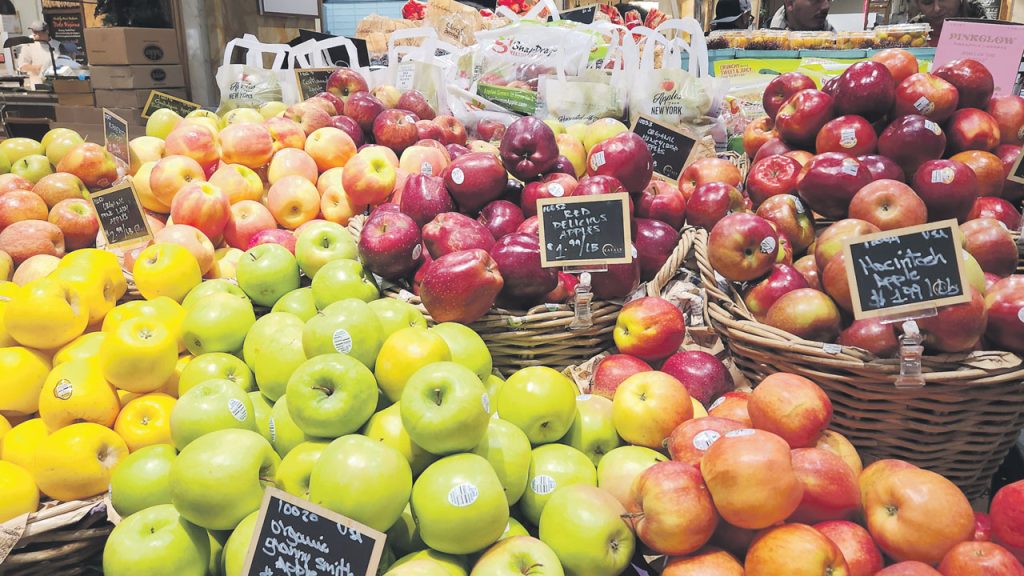
SweeTango, a managed apple variety, is grown by licensed growers in New York and a handful of other states, as well as Nova Scotia, Canada. The variety is marketed by Next Big Thing, a growers’ cooperative.
“NBT plays a central role in marketing and merchandising of SweeTango,” says Jennifer Miller, executive director, NBT, Emmaus, PA. “Although it gets some help from the New York Apple Association, NBT is diligent with its marketing support, which includes social media and influencer partnerships, in-store merchandising and cooperative advertising, and retailer engagement and educational outreach.”
And it doesn’t end there. “Destini product locators are a key element of our strategy and to get consumers to SweeTango,” she says.
GRAB ATTENTION
Marketing may be more important today than ever, given the proliferation of apple varieties, and Crunch Time does what it can to make sure its apples stand out. However, it recognizes that variety has its advantages.
“There’s a major upside,” says Wells. “With so many options to choose from, people have no reason not to have a favorite apple. We have the opportunity to be that favorite. It’s not a responsibility we take lightly.”
Miller says a managed variety such as SweeTango can get attention despite the crowded field, “In a market that is highly competitive and crowded, you have to stand out as an apple variety,” she says. “NBT continues to find avenues to drive home that message to consumers.”
Education for managed varieties is key and needs to be fully understood by the retailer community, Miller adds. “Apples are very diverse and each apple has a different consumer taste profile. Farmers grow an average of 23 varieties that go into retail and foodservice. That, combined with over 100 apple varieties grown commercially in the U.S., makes for a confusing space in retail without guidance. This innovation of managed varieties can be a key to helping customers choose a flavor profile more suited to their preferences.”
ELEVATE APPLES EARLY AND OFTEN
Retailers who dive into the New York apple season early have an opportunity to start spotlighting popular apple varieties as they reach the store and keep the presentation fresh.
“The marketing of New York apples should kick off as soon as possible,” says Wells, “ideally, the very first day apples are available.”
“We want to lock in loyalty for the whole season by establishing buying patterns early in the fall,” she explains. “Additionally, we’ve found that the New York Grown certification helps with merchandising, as does the Buffalo Bills partnership, at least in Bills Country, that is.”
Mansfield says New York retailers Sun Orchard works with “do an excellent job of promoting and using New York apples,” and adds, “local has been a boost in keeping New York apples front and center in the stores.”
For the past several years, Stannard says the New York’s apple sector has introduced new initiatives to drive awareness and sales, from grassroots social media campaigns and virtual farm tours to expanded retail promotions and influencer partnerships.
“Yes! Apples has played an integral role in elevating New York-grown apples in the broader CPG space, building brand recognition among Millennials and Gen Z, and creating connections through direct-to-consumer marketing, co-branded collaborations and social storytelling,” she says. “These efforts are helping to shape the future of apple marketing, while reinforcing the strength of long-standing programs that continue to deliver results at retail.”
A combination of storytelling and promotion has successfully engaged consumers. “Storytelling helps consumers connect more deeply with the food they’re buying and the people behind it, bringing New York’s family orchards and apple varieties to life,” says Stannard. “At the same time, strong promotional support drives traffic and moves volume at retail, making it a powerful one-two punch for building brand affinity and increasing sales.”
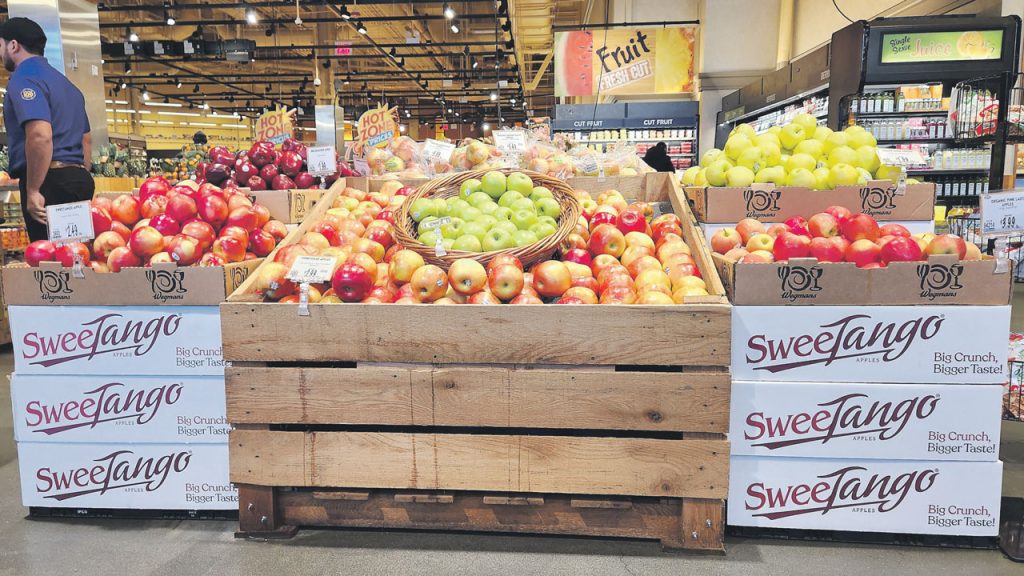
Miller said effective merchandising strategies should keep timing in mind, so kick off promotions in early September as the harvest comes in and keep pushing through fall with in-store sampling, local storytelling that highlights grower stories and regional pride, all supported by digital marketing campaigns that include social media and influencer content to reach younger audiences.
A TALE TO TELL
Stannard says the best marketing delivers effective storytelling based on bringing the people and place behind the fruit to consumers via social media, influencers and digital campaigns.
Wells points out that the work of the New York Apple Association has been effective in spreading the message about the state and the high quality of the crop. “Overall, statewide support for agriculture, including at major industry events, helps to drive visibility and foster connection for New York growers.”
NYAA promotes the health benefits of consuming New York apples through a range of social media content delivering on “Big on Flavor, Big on Nutrition,” says Haskins. Kelly Springer, registered dietitian for the New York Apple Association, will deliver content focusing on apple health benefits.
“New York apples are a perfect healthy snack, and we’re using social media to share the many ways they can be enjoyed,” adds Haskins.
The association also is launching a blog focusing on health on ApplesFromNY.com, which gets 300,000 visitors a year.
NYAA will again run The Big Flavor in the Big Apple campaign in New York City, says Haskins, which features a large digital billboard in Times Square and 225 other digital billboards located across all five New York boroughs, with many near grocery stores. The digital billboards spotlight New York apple growers and apples along with taglines referencing participating retailers.
NYAA has been working closely with retailers in the New York metropolitan area on in-store promotions, while targeting consumers through social advertising that showcases New York apple growers, their orchards and their fruit.
21 of 23 article in Produce Business September 2025

